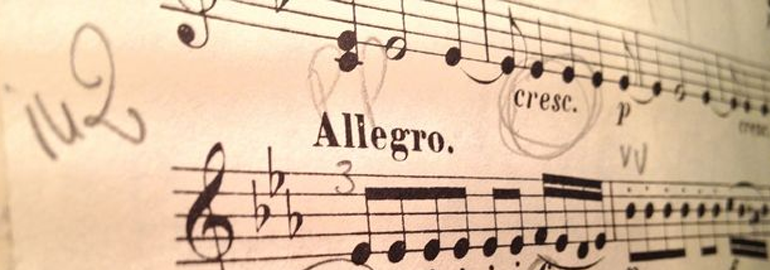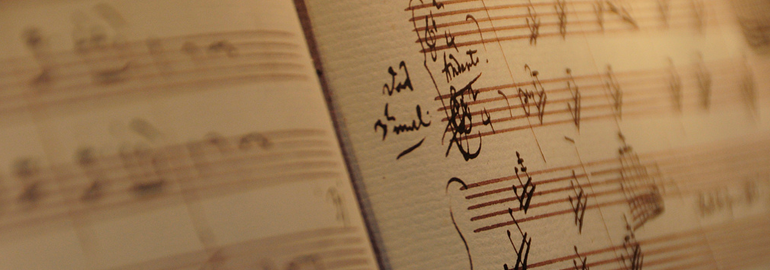Style

Mozart's music, like Haydn's, stands as an archetypal example of the Classical style. His works spanned the period during which that style transformed from one exemplified by the style galant to one that began to incorporate some of the contrapuntal complexities of the late Baroque, complexities against which the galant style had been a reaction. Mozart's own stylistic development closely paralleled the development of the classical style as a whole. In addition, he was a versatile composer and wrote in almost every major genre, including symphony, opera, the solo concerto, chamber music including string quartet and string quintet, and the piano sonata. While none of these genres were new, the piano concerto was almost single-handedly developed and popularized by Mozart. He also wrote a great deal of religious music, including masses; and he composed many dances, divertimenti, serenades, and other forms of light entertainment.
The central traits of the classical style can all be identified in Mozart's music. Clarity, balance, and transparency are hallmarks, though a simplistic notion of the delicacy of his music obscures for us the exceptional and even demonic power of some of his finest masterpieces, such as the Piano Concerto No. 24 in C minor, K. 491, the Symphony No. 40 in G minor, K. 550, and the opera Don Giovanni. Charles Rosen has written (1997): "It is only through recognizing the violence and sensuality at the center of Mozart's work that we can make a start towards a comprehension of his structures and an insight into his magnificence. In a paradoxical way, Schumann's superficial characterization of the G minor Symphony can help us to see Mozart's daemon more steadily. In all of Mozart's supreme expressions of suffering and terror, there is something shockingly voluptuous." Especially during his last decade, Mozart explored chromatic harmony to a degree rare at the time. The slow introduction to the "Dissonant" Quartet, K. 465, a work that Haydn greatly admired even as it perplexed him,[citation needed] rapidly explodes a shallow understanding of Mozart's style as light and pleasant.
From his earliest years Mozart had a gift for imitating the music he heard; since he traveled widely, he acquired a rare collection of experiences from which to create his unique compositional language. When he went to London as a child, he met J.C. Bach and heard his music; when he went to Paris, Mannheim, and Vienna, he heard the work of composers active there, as well as the spectacular Mannheim orchestra; when he went to Italy, he encountered the Italian overture and opera buffa, both of which were to be hugely influential on his development. Both in London and Italy, the galant style was all the rage: simple, light music, with a mania for cadencing, an emphasis on tonic, dominant, and subdominant to the exclusion of other chords, symmetrical phrases, and clearly articulated structures.[citation needed] This style, out of which the classical style evolved, was a reaction against the complexity of late Baroque music. Some of Mozart's early symphonies are Italian overtures, with three movements running into each other; many are "homotonal" (each movement in the same key, with the slow movement in the parallel minor). Others mimic the works of J.C. Bach, and others show the simple rounded binary forms commonly being written by composers in Vienna. One of the most recognizable features of Mozart's works is a sequence of harmonies or modes that usually leads to a cadence in the dominant or tonic key. This sequence is essentially borrowed from Baroque music, especially J. S. Bach. But Mozart shifted the sequence so that the cadence ended on the stronger half, i.e., the first beat of the bar. Mozart's understanding of modes such as Phrygian is evident in such passages.[citation needed]
As Mozart matured, he began to incorporate some more features of Baroque styles into his music. For example, the Symphony No. 29 in A Major K. 201 uses a contrapuntal main theme in its first movement, and experimentation with irregular phrase lengths. Some of his quartets from 1773 have fugal finales, probably influenced by Haydn, who included three such finales in his recently published Opus 20 set. The influence of the Sturm und Drang ("Storm and Stress") period in music, with its brief foreshadowing of the Romantic era to come, is evident in some of the music of both composers at that time. Mozart's Symphony No. 25 in G minor, K. 183 is another excellent example of this style.
Over the course of his working life, Mozart switched his focus from instrumental music to operas, and back again. He wrote operas in each of the styles current in Europe: opera buffa, such as The Marriage of Figaro, Don Giovanni, or Così fan tutte; opera seria, such as Idomeneo; and Singspiel, of which Die Zauberflöte is probably the most famous example by any composer. In his later operas, he developed the use of subtle changes in instrumentation, orchestration, and tone colour to express or highlight psychological or emotional states and dramatic shifts. Here his advances in opera and instrumental composing interacted. His increasingly sophisticated use of the orchestra in the symphonies and concerti served as a resource in his operatic orchestration, and his developing subtlety in using the orchestra to psychological effect in his operas was reflected in his later non-operatic compositions.

